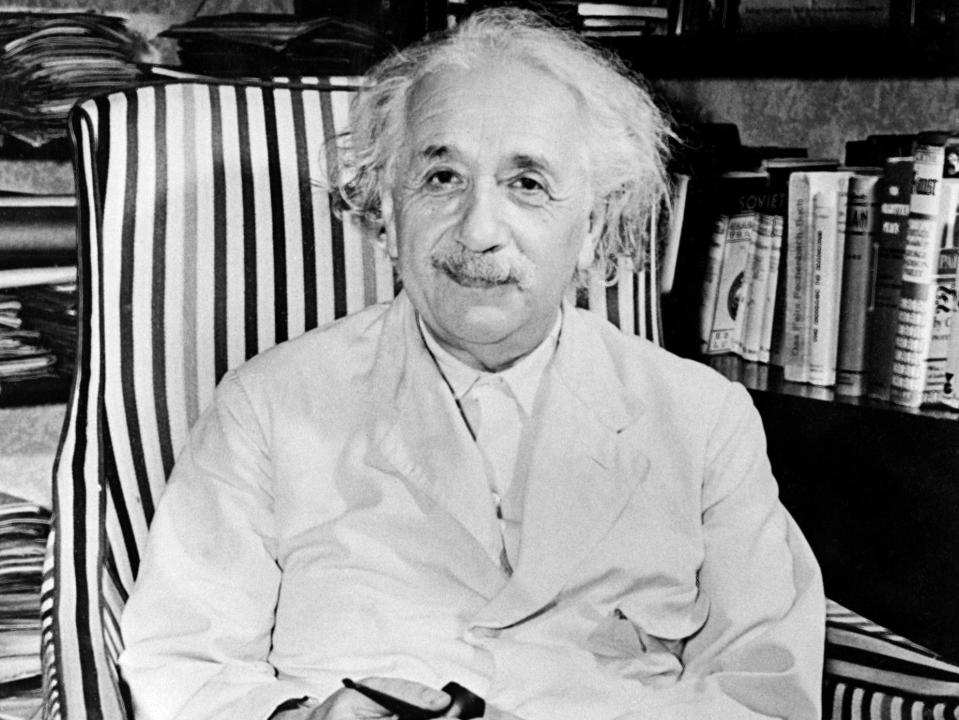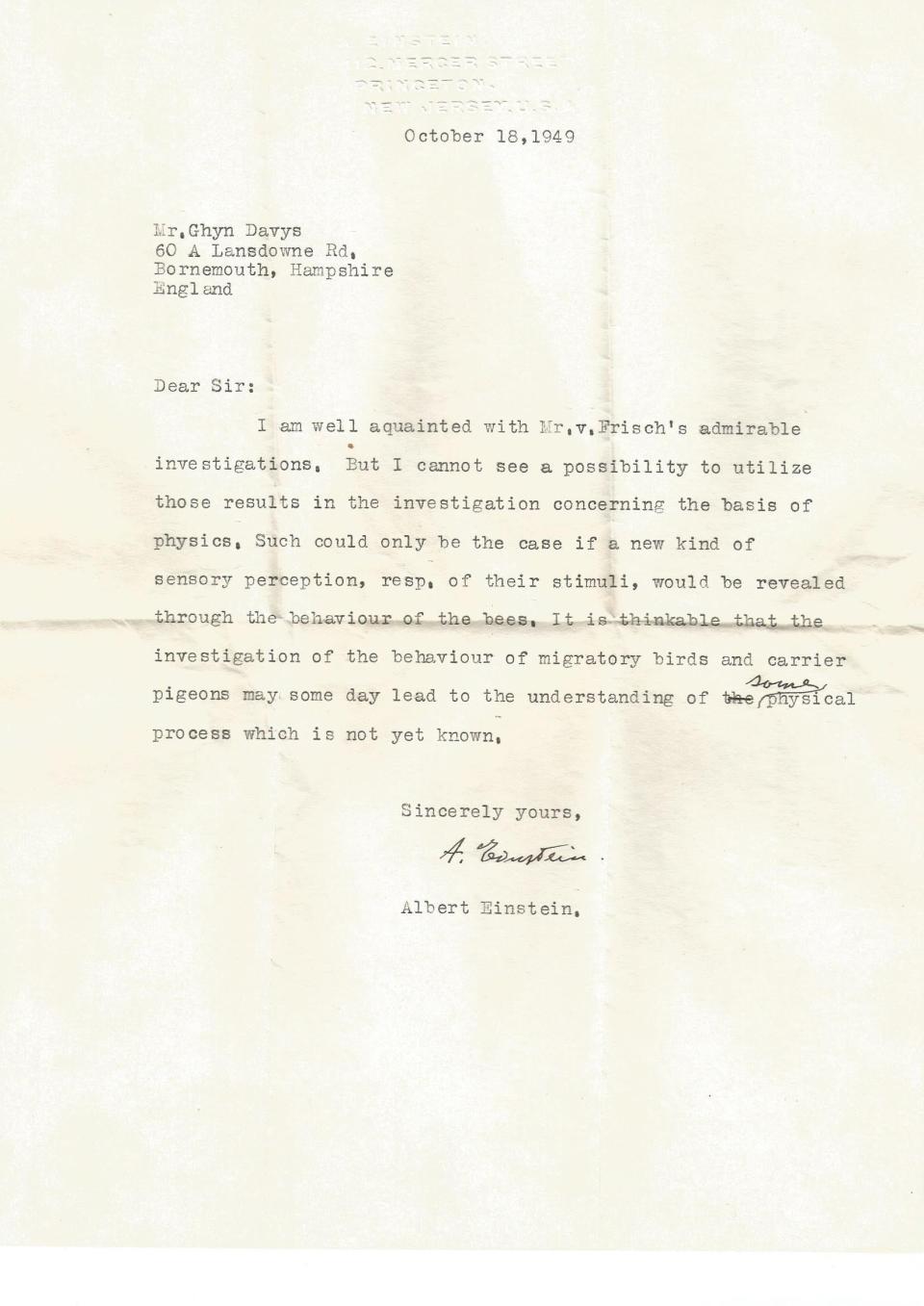Previously unseen Einstein letter reveals interest in navigation of migratory birds and bees

How do animals like birds and flying insects - some of which undertake enormous migratory flights - find their way around our planet?
This question is still being answered today, but it is something which interested Albert Einstein, who suggested that understanding how these animals navigated could lead to important scientific discoveries.
Einstein’s interest in the study of animals has been revealed in a short, previously unpublished letter which he sent to radar researcher Glyn Davys. His widow, Judith Davys, shared it with researchers at RMIT University in Melbourne Australia.
The research team said recent discoveries “back up Einstein’s thinking 72 years ago”.
RMIT Associate Professor Adrian Dyer has published significant studies into bees and is the lead author of a new paper on Einstein’s letter.
Dr Dyer said the letter shows how Einstein envisaged how new discoveries could come from studying animals.
“Seven decades after Einstein proposed new physics might come from animal sensory perception, we’re seeing discoveries that push our understanding about navigation and the fundamental principles of physics,” he said.
The letter also reveals that Einstein met with Nobel laureate Karl von Frisch, who was a leading bee and animal sensory researcher.
In April 1949, von Frisch presented his research on how honeybees navigate more effectively using the polarisation patterns of light scattered from the sky.
The day after Einstein attended von Frisch’s lecture, the two researchers shared a private meeting.
Although this meeting wasn’t formally documented, the recently discovered letter from Einstein provides insight as to what they might have talked about.
“It is thinkable that the investigation of the behaviour of migratory birds and carrier pigeons may someday lead to the understanding of some physical process which is not yet known,” Einstein wrote.

Professor Andrew Greentree, a theoretical physicist at RMIT, said Einstein also suggested that for bees to extend our knowledge of physics, new types of behaviour would need to be observed.
“Remarkably, it is clear through his writing that Einstein envisaged new discoveries could come from studying animals’ behaviours,” Professor Greentree said.
Since Einstein sent his letter, a body of research has begun to provide clues as to how migratory birds navigate while flying thousands of miles to arrive at a precise destination.
In 2008, research on thrushes fitted with radio transmitters showed, for the first time, that these birds use a form of magnetic sense - similar to an internal compass - as their primary orientation guide during flight.
One theory for the origin of magnetic sense in birds is the use of quantum randomness and entanglement. Both of these physics concepts were first proposed by Einstein.
The research is published in the Journal of Comparative Physiology A.
Read More
Scientists call for ‘surge’ vaccinations against India variant following rise in cases
Researchers discover the world’s first truly modern submarine – deep under the English Channel
Plan buildings with better ventilation to prevent future Covid-like outbreaks, say experts

 Yahoo Finance
Yahoo Finance 